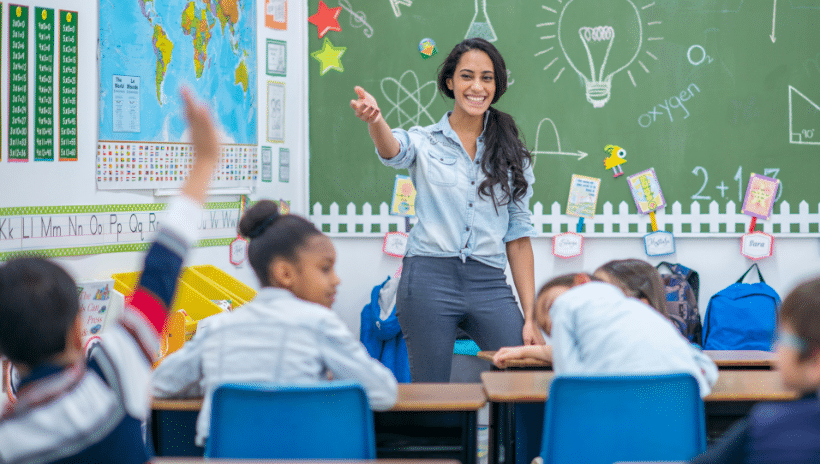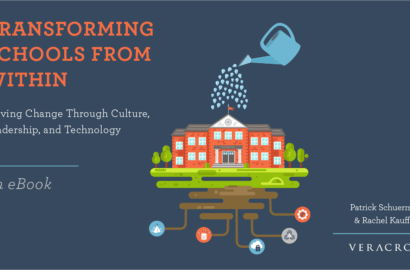
A positive learning environment creates an exceptional educational experience. When students feel encouraged, praised, and rewarded, they are more likely to be engaged and attentive in class. Positive reinforcement in the classroom can help teachers motivate students and improve student outcomes.
Defined as “any event after a specific behavior to encourage that behavior to happen again,” positive reinforcement is when you reward a positive action in order to encourage repeated positive behavior. Positive reinforcement in the classroom can take the form of praise or attention from the teacher, access to activities, or tangible rewards to encourage students to act in a certain way.
Here’s the impact of recognizing achievement in young learners and some positive reinforcement examples teachers can try in the classroom.
The Benefits of Positive Reinforcement in the Classroom
People often compare positive reinforcement with negative reinforcement, where a punishment or discouragement follows bad behavior. While this is quick and easy to administer, it’s only a temporary fix. Negative reinforcement does not work for chronic behavior issues.
When teachers use positive reinforcement, it encourages kids to repeat good behavior. They associate good memories with their past choices and are more likely to repeat these choices again.
Positive reinforcement also helps to create stronger bonds between staff and students. When students are encouraged, they feel more confident and comfortable. This even allows them to engage more in class and improves classroom attendance.
According to Tiffany L. Otero and Jillian M. Haunt’s study, “One way to ensure the best learning environment outcome is to encourage our learners through positive reinforcement. Students learn to self-monitor themselves, manage their time, set goals, and self-evaluate through the reinforcement of the teacher(s).”
In another study by Brigham Young University, 2,536 students aged 5-12 were observed in 151 classes across 19 schools and three different states. The researchers found that when teachers used positive reinforcement in the classroom, the students focused on tasks up to 30% more.
Overall, using positive reinforcement creates a better environment for the student, their peers, teachers and staff, and the school as a whole.
How to Motivate Students
The language you choose is essential when it comes to effectively motivating students. It’s important to praise children for their efforts and the process they went through for the achievement rather than concentrating on the children themselves.
Here are some positive reinforcement examples. Some support the person (X) while others support the process (✓).
X Great job, you’re very smart.
✓ Your work looks great! I can tell you put in a lot of effort.
X You did great work on your homework. You’re an A student.
✓ Great job on your homework! I really like the introduction and how you supported your hypothesis with references.
X You’re good at taking tests!
✓ Well done on the science test! I can see the level of effort you put into working out the answers.
X Great essay! You improved a ton.
✓ You did really well on this essay. I can see that you’ve paid attention in class and your essay shows how well you understood the subject material.
Tips for Selecting Language
Do: be specific. Ensure that the student understands why they’re being praised. Go into detail and expand on any positive feedback so that the student understands where their learning efforts should go.
Do: be personal. Being specific means you take the time to recognize each child for their individual talent. By providing detail, you’re personalizing rather than generalizing their feedback, which adds significant value to the praise.
Don’t: focus on ability. Focus on the student’s effort rather than their abilities. If a student fails at a task and receives ability-focused praise, they’re more likely to give up rather than try again. When children have a fixed concept about their abilities, they don’t always believe they can do better.
Don’t: be too critical. Don’t mix praise with criticism. When you say something like, “Great work on the test. Try to answer the essay portion in more detail next time,” the praise becomes lost, and the child’s self-esteem can be affected.
Tools for Positive Reinforcement in the Classroom
Teachers have enough on their plates without having to manually track student behavior. Solutions like Epraise can help! Epraise is a learning platform designed by teachers, for teachers to help foster a positive learning environment through meaningful student recognition and rewards.
Read this case study to learn how schools like Valley Gardens Middle School rely on Epraise to provide positive reinforcement and boost morale, participation, and classroom attendance.



